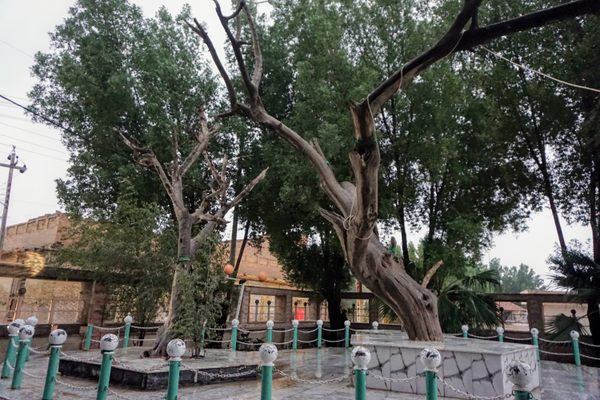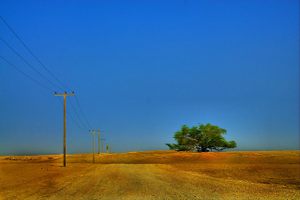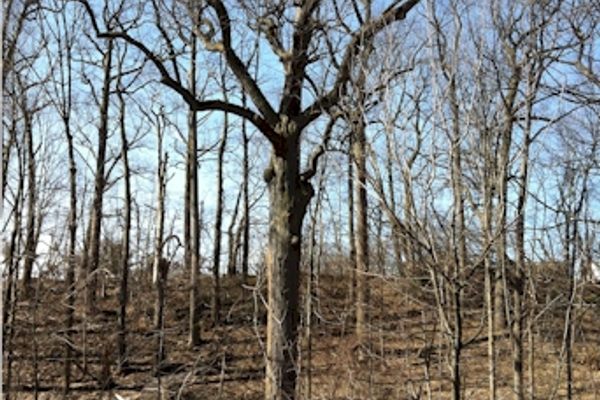About
In the small southern Iraqi city of Qurna, an unusual shrine stands on the shore of the Tigris: a small, dead tree, protected by low brick walls and surrounded by a concrete plaza. This tree is, according to local legend, the Tree of the Knowledge of Good and Evil, the one that Eve ate from in the Garden of Eden.
Qurna (also spelled Qurnah, and pronounced “gurna”) has been noted in travelers’ accounts for centuries as the place where the great Tigris and Euphrates rivers meet and join together for a few miles before emptying into the Persian Gulf. The Tigris and Euphrates are two of the four “rivers of paradise” that flowed out of the Garden of Eden, as named in Genesis 2:10-14. Elements from the early stories of Genesis have been traced to the cuneiform tablets written by the Sumerians and Babylonians, who lived in this part of the world.
It is clearly a deciduous tree, not a palm, but no one can say for sure which species it once was, or how long it has been there. British soldiers reportedly climbed and broke the Tree in post-World War I occupation; it was repaired with concrete. In the 1950s, a small park of local plants was built around the Tree as a gesture of goodwill after World War II. Under the early reign of Saddam Hussein, the shrine was preserved in a small concrete plaza, which has reportedly deteriorated in the wake of the 2003 American invasion. By then there were actually several Trees of Knowledge.
Although the shrine is associated with the Garden of Eden story, which is shared among Islam, Christianity, and Judaism, it also retains aspects of much older, pre-monotheistic traditions of tree worship in the Middle East. When one sacred tree dies, you must plant another to preserve the sacredness, so often several trees are standing in different stages of decay. People travel from other parts of the country to pray at the Tree, sometimes tying small green pieces of cloth around its branches as a token.
Related Tags
Community Contributors
Added By
Published
July 23, 2012
























